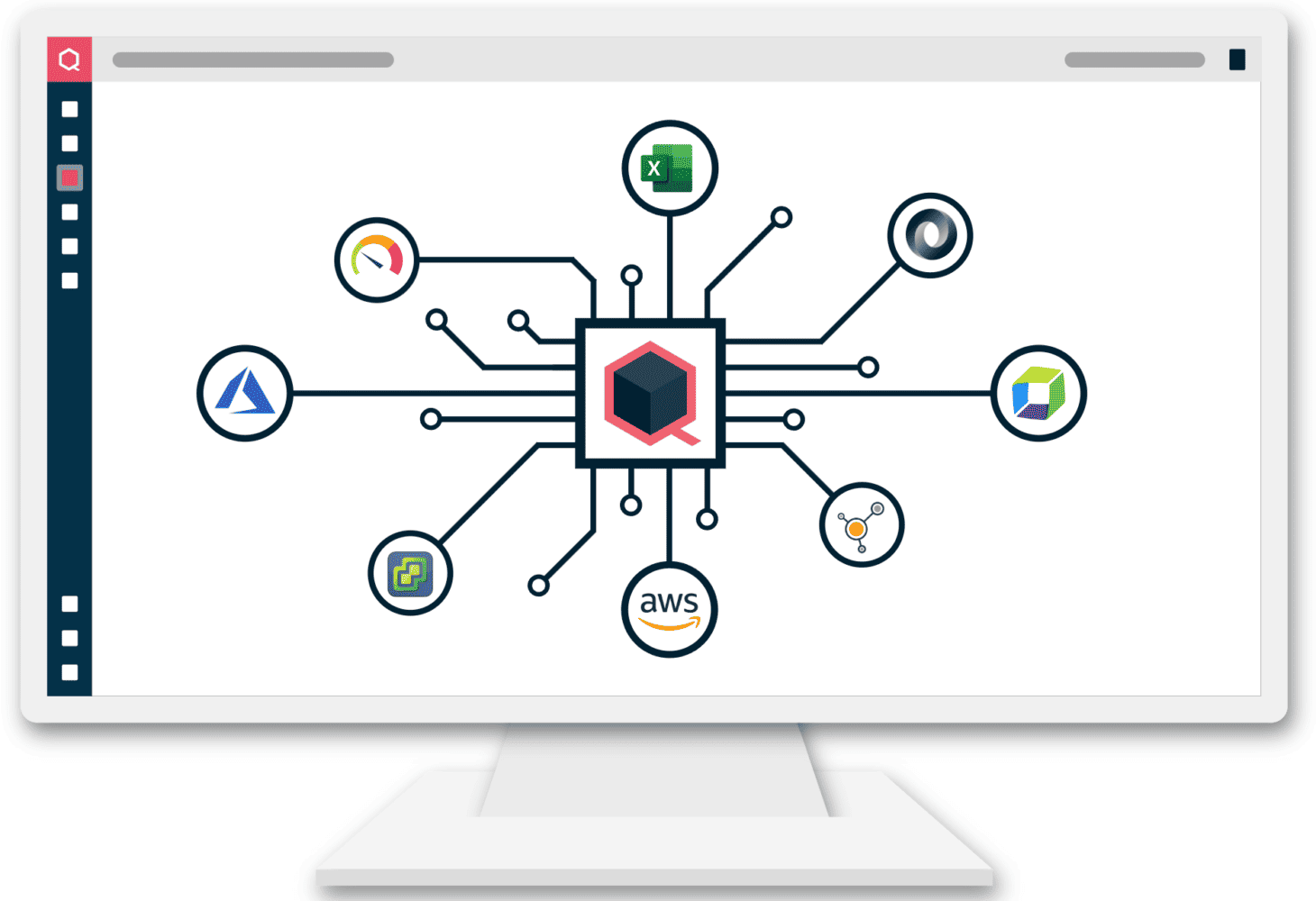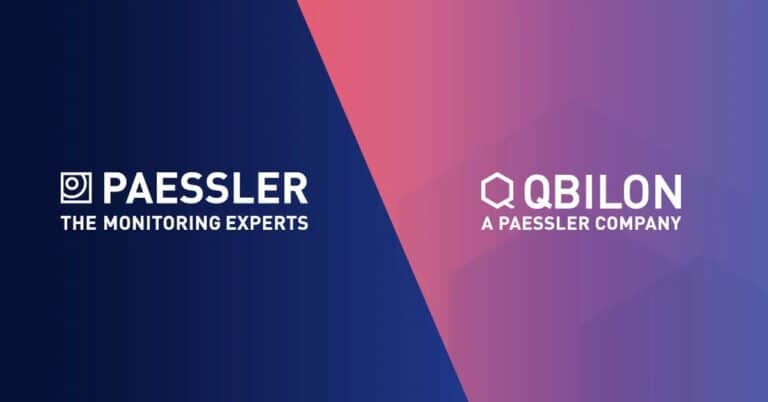Qbilon was developed as a standalone tool several years ago. The monitoring experts, Paessler, set up an integration with Qbilon, which sparked a desire for further cooperation. Consequently, Paessler decided to acquire Qbilon – their first ever – and step further into providing insights into IT landscapes of large companies.
Helmut Binder, Paessler’s CEO, says Qbilon fits naturally with what Paessler wants to achieve. In 25 years, the company has become an expert in monitoring an organisation’s entire IT landscape with its PRTG tools. It may involve network equipment and traffic, but there are also sensors for application and printer performance. If a sensor detects a failure or other problem, the right person is informed to work on a solution, keeping the entire infrastructure running smoothly.
In the past few years, however, new challenges around enterprise infrastructure have emerged. These challenges often stem from an organisation’s very extensive and complex hybrid IT landscape. As a result, infrastructure mapping and visibility can become cumbersome and uncontrollably complex. Traditionally, companies keep infrastructure documentation to maintain some visibility into dependencies, but in a hybrid world, decent documentation becomes highly challenging. That is precisely what Paessler now wants to tackle with Qbilon by providing a tool for automated documentation and analysis. So, an IT department can finally regain a grip on the infrastructure and be ready for the hybrid world.
Cloud migration in full swing
In this regard, Paessler particularly points out that moving applications and infrastructure to the cloud is the preferred option for many companies. Organisations see many advantages in moving to the cloud, such as scalability and flexibility. Yet managing that migration can be tricky precisely because of the lack of insights into the IT infrastructure. Paessler conducted research which suggests that cloud adoption is the biggest challenge for 41 per cent of IT departments in the Benelux region.

On a side note, companies have different strategies for moving their IT infrastructure. They can move from on-premises to the cloud, from the cloud to another cloud or from the cloud back to on-premises. Paessler’s research shows that, at least in our region, many moves will take place. While 72 per cent of IT infrastructure is not currently in the cloud, 61 per cent of organisations expect to increase their commitment to cloud adoption within the next two years. From on-premises to the cloud, thus, seems to be a significant preference in the strategy of Benelux organisations.
Although interest is high, actual implementation is still low, according to Paessler’s figures. Currently, only 28 per cent of IT infrastructure in the Benelux and 19 per cent globally is hosted in the cloud. However, there are significant differences between sectors. Globally, 92 per cent of public sector organisations store data locally because of security concerns. In the telecoms, financial services and education sectors, cloud adoption seems to be much faster, according to Paessler’s research.
Growth equals complexity
This evolving infrastructure leads to new needs in organisations. The IT landscape is growing, and complexity is increasing. Some IT elements run on-premises, and others run in the cloud. As the complete infrastructure grows very fast, the work for documentation also increases in such hybrid IT landscapes. Traditionally, documentation is done manually, which has become almost impossible in the hybrid world. Moreover, documentation is difficult to keep up-to-date in a manual way, which gets in the way of planning subsequent cloud migrations.
The growth of infrastructure, workloads, and applications makes cloud migration difficult, in Paessler and Qbilon’s view. It raises a lot of questions among IT professionals. As Paessler explained during a recent webinar, the questions below are alive and well in the current situation.

Understanding every pixel
Paessler wants Qbilon to help companies with exactly this kind of question. The tool provides a real-time overview of a company’s IT infrastructure. It contains the details of an infrastructure by providing automated documentation. For example, a company can zoom in on the dependencies between infrastructure components. The tool then provides the right up-to-date information. There is also transparency on all assets, allowing an organisation to determine whether it can reduce costs on certain infrastructure components.
Of course, PRTG and Qbilon have similarities. They are both tools that collect information about infrastructure. PRTG has sensors for collecting data, while Qbilon integrates with existing tools for IT operations. So, Qbilon connects to PRTG, so to speak, but also to other infrastructure tools. For instance, Qbilon can connect to cloud platforms AWS and Microsoft Azure and virtualisation solution vSphere. Generic data can also be fed into the tool, such as JSON and CSV, for legacy infrastructure information.
The Qbilon tool ultimately relies on IT architecture mining to achieve real-time visibility by creating an always up-to-date “IT map“. By analysing infrastructure datasets this way, companies get new detailed insights. Or, as Qbilon itself describes it, “Understanding every pixel”.
By using PRTG and Qbilon together, companies are supported in understanding technical dependencies and processes. PRTG works for network monitoring in this case, and Qbilon provides the IT intelligence. This allows organisations to ensure performance, identify potential bottlenecks early and perform proactive troubleshooting. PRTG is to serve even more as a data source for Qbilon in this regard, ultimately maximising the mapping of technical dependencies and processes.

Paessler hopes the acquisition will lead to a growth spurt in its ambitions. It wants to use PRTG to monitor more and more infrastructure components and grow into the central point for monitoring IT, OT, and IoT. On the other hand, there is a particular focus on the enterprise segment. With Qbilon on board, Paessler thinks it can also do more for multinationals, for example.
Also read: Paessler PRTG monitoring increases relevance by cloud and enterprise focus
The details of deep insights
So, large companies, in particular, can benefit from Qbilon’s deep insights. Their infrastructure is huge. So big that they often lose track of it. The result is that resources are either unused or oversized. The grip on infrastructure costs is thus lost. Especially in the cloud, where a pay-per-user model applies, this causes unwanted costs. After all, resources that are running but not being used generate unnecessary costs.
Two different Qbilon software products are available to best support companies: Cloud and Ultimate. The Cloud version automatically extracts data from various cloud computing platforms and gives users insights to optimise costs and strengthen security. “Graph views“ are at the heart of the tool, allowing IT professionals to analyse infrastructure further and understand interdependencies. The Ultimate edition goes a step further by including many “on-prem“ data sources as well, and therefore enabling deeper analyses on interdependencies on different levels. High-level assets and specific infrastructure elements can be analysed within one common data set. The Ultimate edition best aligns with Paessler’s commitment to leverage deep insights for the transition to the cloud.
Paessler PRTG and Qbilon in practice
We were also curious to know what the combination of PRTG and Qbilon really means for companies. Paessler shared the real-life example of KTR Systems, a multinational company with over 1,200 employees and 24 subsidiaries. Business growth and new locations increased the size and complexity of its IT infrastructure. Managing and documenting these rapidly evolving IT challenges presented a complex task. KTR Systems risked losing overview and keeping up with outdated documentation. KTR Systems saw the solution in the PRTG-Qbilon combination.
PRTG has been running in KTR Systems’ corporate environment since 2011 to monitor the network infrastructure. The combination of PRTG and Qbilon allows KTR Systems to regain the visibility of its entire IT landscape. “From servers and devices to applications and services, PRTG and Qbilon help KTR Systems gain an up-to-date architecture view, identify potential bottlenecks and proactively resolve issues before they can affect IT system performance,” the parties explain.
KTR Systems can deploy automated documentation of the IT landscape through technology. This replaces manual documentation that is time-consuming and error-prone. The risks of outdated information are reduced as automated documentation keeps everything up to date. Documentation efforts are estimated to be reduced by up to 50 per cent.
In addition, PRTG and Qbilon KTR Systems offer support in planning migration projects. Mapping complex dependencies helps KTR Systems identify potential side effects and challenges during migrations. This, in turn, dovetails well with Paessler’s major aim, to better support the shift to the cloud through the acquisition.
The course of cloud migration
The transition to the cloud is a significant challenge for the IT sector, especially in the Benelux region. Deep insights and advanced monitoring are crucial to make this transition smooth. Paessler and Qbilon provide the necessary tools and expertise to support companies in understanding their IT landscape and making informed decisions. The acquisition of Qbilon strengthens Paessler’s position in the IT monitoring market and opens new growth opportunities. By combining PRTG and Qbilon, Paessler can offer monitoring for different components, including IT, OT and IoT, and focus more on enterprise segments, such as multinationals.
Qbilon provides in-depth infrastructure insights and helps with cost optimisation and vulnerability identification. The future of IT architecture will rely heavily on these deep insights and monitoring tools.
